Shoulder Procedures
Shoulder Arthroscopy
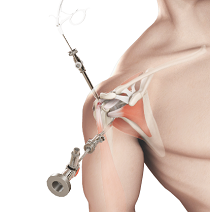
Arthroscopy is a minimally invasive diagnostic and surgical procedure performed for joint problems. Shoulder arthroscopy is performed using a pencil-sized instrument called an arthroscope. The arthroscope consists of a light system and camera to project images onto a computer screen for your surgeon to view the surgical site. Arthroscopy is used to treat disease conditions and injuries involving the bones, cartilage, tendons, ligaments, and muscles of the shoulder joint...
Arthroscopic Rotator Cuff Repair
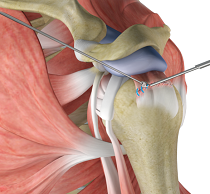
The rotator cuff is a group of tendons in the shoulder that provide support and enable a wide range of motion of the shoulder joint. Major injuries can cause rotator cuff tears. A rotator cuff tear is one of the most common causes of shoulder pain in middle-aged adults and older individuals...
Shoulder Joint Replacement
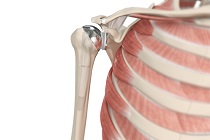
Total shoulder replacement surgery is performed to relieve these symptoms. In this surgery, the damaged articulating parts of the shoulder joint are removed and replaced with artificial prostheses. Replacement of both the humeral head and the socket is called a total shoulder replacement...
Reverse Shoulder Replacement
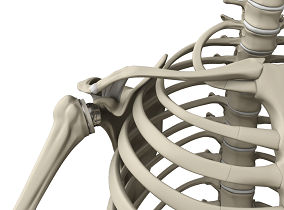
Reverse total shoulder replacement is an advanced surgical technique specifically designed for rotator cuff tear arthropathy, a condition where the patient suffers from both shoulder arthritis and a rotator cuff tear...
Minimally Invasive Shoulder Joint Replacement
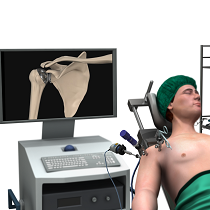
Shoulder joint replacement is a surgical procedure to replace damaged bone surfaces with artificial components to relieve pain and improve functional ability in the shoulder joint. Shoulder joint replacement can be done by a traditional "open" approach or through a minimally invasive approach...
Shoulder Labrum Reconstruction
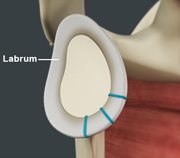
The shoulder joint is a ball and socket joint. A 'ball' at the top of the upper arm bone (the humerus) fits neatly into a 'socket', called the glenoid, which is part of the shoulder blade (scapula). The labrum is a ring of fibrous cartilage surrounding the glenoid, which helps in stabilizing the shoulder joint. The biceps tendon is attached inside the shoulder joint at the superior labrum of the joint...
Shoulder Stabilization
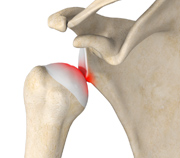
Shoulder stabilization surgery is done to improve stability and function to the shoulder joint and prevent recurrent dislocations. It can be performed arthroscopically, depending on your particular condition, with much smaller incisions. Arthroscopic stabilization is a surgical procedure to treat chronic instability of the shoulder joint...
Anatomic and Reverse Total Shoulder Replacement

The shoulder is a highly movable body joint that allows various movements of the arm. It is a ball and socket joint, where the head of the humerus (upper arm bone) articulates with the socket of the scapula (shoulder blade) called the glenoid. The two articulating surfaces of the bones are covered with cartilage, which prevents friction between the moving bones. The cartilage is lubricated by synovial fluid. Tendons and ligaments around the shoulder joint provide strength and stability to the joint.
Subacromial Decompression
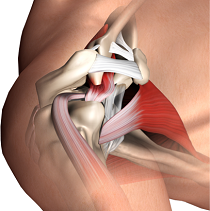
The acromion is a bony projection of the shoulder blade that forms a roof over the shoulder joint. The space under the acromion is called the sub-acromial space. Tendons of the rotator cuff muscles pass through this space and attach to the head of the humerus or upper arm bone helping with movement and stability of the shoulder joint.
Distal Clavicle Excision/Resection
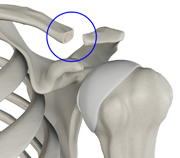
The shoulder is made up of 3 bones: the scapula (shoulder blade), humerus (upper arm bone) and collar bone. Repeated stress from sports such as weight lifting or weight training or using an air hammer frequently at work can cause small fractures at the end of the collar bone close to the shoulder joint. This type of injury is called distal clavicle osteolysis or weightlifter’s shoulder.
Arthroscopic Shoulder Stabilization-Labral Repair, BANKART Repair
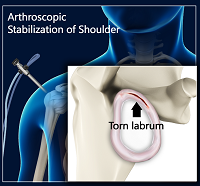
Shoulder instability is a chronic condition that causes frequent dislocations of the shoulder joint. A dislocation occurs when the end of the humerus (the ball portion) partially or completely dislocates from the glenoid (the socket portion) of the shoulder. A partial dislocation is referred to as a subluxation whereas a complete separation is referred to as a dislocation.

